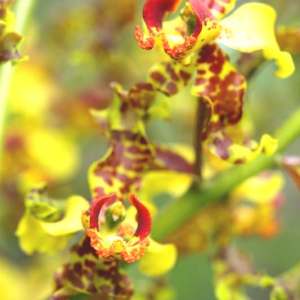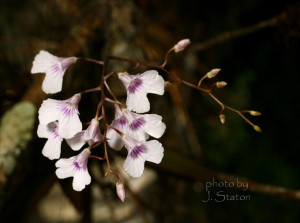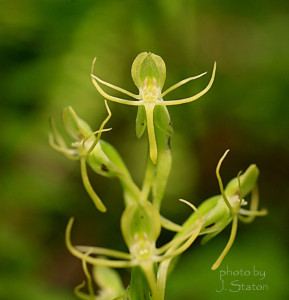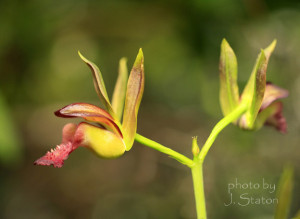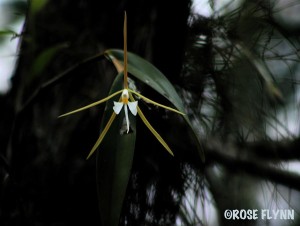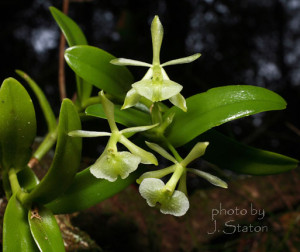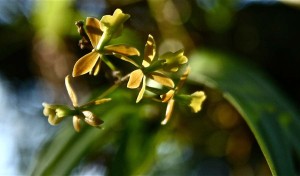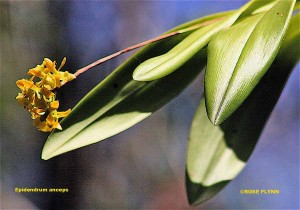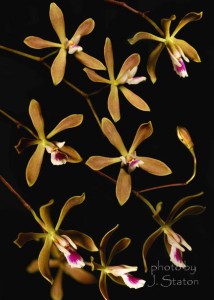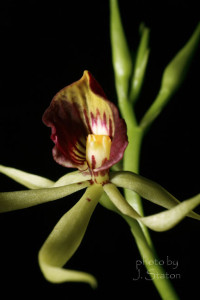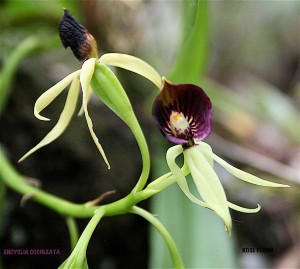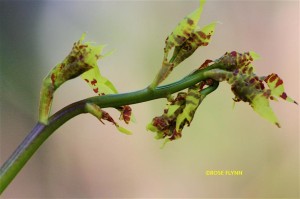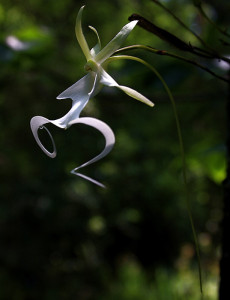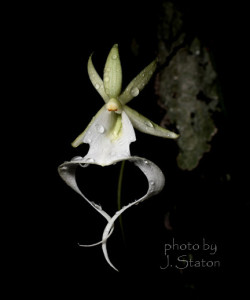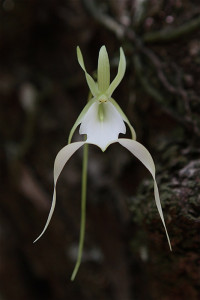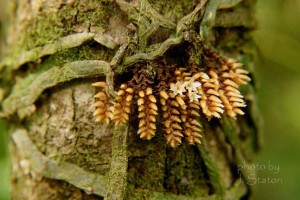Friends of Fakahatchee: Dedicated to financial and volunteer support to preserve the unique ecology and cultural heritage of Fakahatchee Strand Preserve State Park and educate the public about its importance.
Fakahatchee’s Orchids
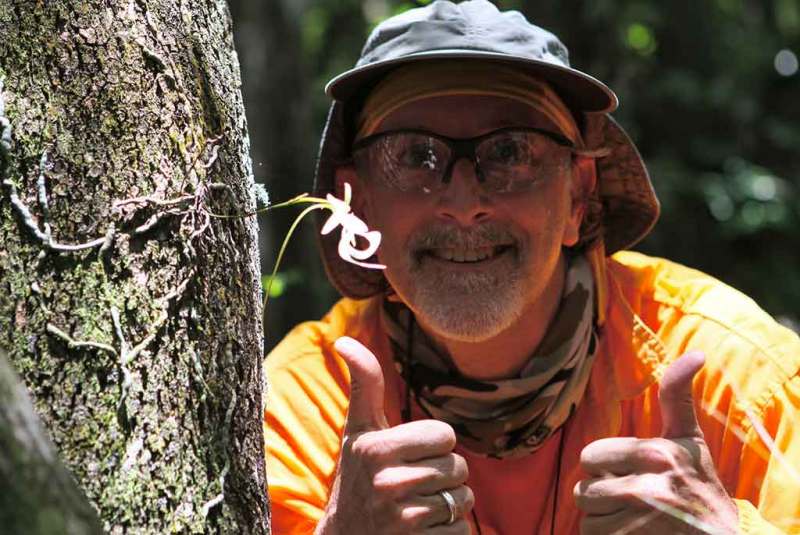
Volunteer Dino Barone enjoys the discovery of a Ghost orchid (Dendrophylax linden) in the Fakahatchee.
Forty-seven orchid species are found in the Fakahatchee. The Fakahatchee’s relative orchid richness is due in part to the truly tropical nature of its frost-free central slough. Most temperate orchid species are terrestrial, but about half of the Fakahatchee’s are epiphytic, reflecting their tropical origin. This is why Fakahatchee Strand is often referred to as the orchid capital of North America, or sometimes even as the northern most island of the Caribbean. Read more about why Fakahatchee is home to orchids on our Natural History page.
It is unfortunate that our fascination with orchids has resulted in their decline. “Poachers” of rare orchids have reduced the diversity and abundance of the orchids in the Fakahatchee strand. For example, you may be aware that the Fakahatchee’s rare ghost orchid was the subject of the book and movie, “The Orchid Thief.” However, there is hope for their protection now and in the future with help from the Friends of Fakahatchee. Volunteers are trained to record and report suspicious activity and the Friends fund the installation and maintenance of a network of hidden cameras to guard against illegal plant removal.
You can learn more about the protection of this beautiful and fragile species via National Geographic’s short film about the Ghost Orchid in Corkscrew Swamp Sanctuary.
Video: Meet the Orchids of the Fakahatchee
Writer/Producer: Chelle Koster Walton
Take a virtual tour of the orchids of the Fakahatchee. This video provides an overview of the preserve’s orchids including the infamous ghost orchid – hear about the real-life history that inspired “The Orchid Thief.”
Orchid Restoration
In 2007, Park Biologist Mike Owen and Dennis Giardina, Everglades Region Biologist for Florida Fish and Wildlife Commission, entered into collaboration with Matt Richards from Atlanta Botanical Garden to experimentally restore rare and endangered orchid species at Fakahatchee Strand Preserve State Park.
Restoration of the cigar orchid, Cyrtopodium punctatum is quite a success story. Once propagated and brought to size, the Friends helped disperse the baby orchids throughout the park to help ensure their survival. For the story of the beginning of this heroic work, read this Cigar Orchid Restoration article.
For more about the continuing restoration efforts, read Cigar Orchid Restoration Project Explodes In Color on our Armchair Interpretative Walks page.
Lost and Found in Cuba – The Story of Fakahatchee’s Lost Orchids
Two of Fakahatchee’s “lost orchids,” the rat-tail orchid, Bulbophyllum pachyrachis, and Acuña’s Epidendrum, Epidendrum acunae were extripated from the Preserve—hence Florida—by collectors. What once occurred in the Fakahatchee is no longer.
The closest, wild populations of those two species occur in Western Cuba.
Mike Owen and Dennis Giardina traveled to Cuba in 2013 to attend an international orchid conservation conference they co-presented a paper in Spanish and English on the Fakahatchee cigar orchid restoration project, and made a very fortuitous find.
They found Fakahatchee’s “lost orchids” growing at Soroa Botanical Garden, the site of the conference. There were multiple individuals of both species that were grown from seed collected from wild plants in the Rosary Mountains Biosphere Preserve.
Follow the continuing saga of Dennis’ attempts to secure viable seeds from Cuba; we are certain he will eventually succeed and bring back the “lost orchids” to the Fakahatchee.
Lost and Found in Cuba, Part 7Lost and Found in Cuba, Part 6
Lost and Found in Cuba, Part 5
Lost and Found in Cuba, Part 4
Lost and Found in Cuba, Part 3
Lost and Found in Cuba, Part 2
Lost and Found in Cuba, Part 1


